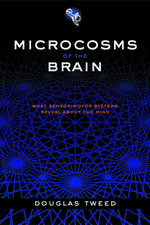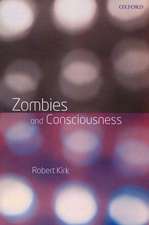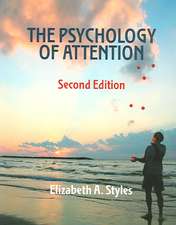Making a Machine That Sees Like Us
Autor Zygmunt Pizlo, Yunfeng Li, Tadamasa Sawada, Robert M. Steinmanen Limba Engleză Hardback – 29 mai 2014
Preț: 467.23 lei
Preț vechi: 681.48 lei
-31% Nou
Puncte Express: 701
Preț estimativ în valută:
89.42€ • 93.01$ • 73.82£
89.42€ • 93.01$ • 73.82£
Carte tipărită la comandă
Livrare economică 01-07 aprilie
Preluare comenzi: 021 569.72.76
Specificații
ISBN-13: 9780199922543
ISBN-10: 0199922543
Pagini: 256
Dimensiuni: 239 x 160 x 20 mm
Greutate: 0.48 kg
Editura: Oxford University Press
Colecția OUP USA
Locul publicării:New York, United States
ISBN-10: 0199922543
Pagini: 256
Dimensiuni: 239 x 160 x 20 mm
Greutate: 0.48 kg
Editura: Oxford University Press
Colecția OUP USA
Locul publicării:New York, United States
Recenzii
'Making a Machine That Sees Like Us is an important book for anyone with an interest in machine vision for it offers a bottom-up approach to object perception that incorporates a priori contraints rather than sensory data alone. No doubt the inclusion of sensory data together with the constraints is the determining factor in its success as a model of machine vision. It is written in a style that is easy to read by those who do not have much background in visual perception.'
Notă biografică
Zygmunt Pizlo is a professor of Psychological Sciences and of Electrical and Computer Engineering at Purdue University. He has published over 100 journal and conference papers on all aspects of vision as well as on problem-solving. In 2008, he published the first book devoted to 3D shape-perception.Yunfeng Li is a postdoctoral fellow at Purdue University. His research interests focus on applying psychophysics and mathematics to explore and model human visual perception of 3D shapes and scenes, regularization and Bayesian methods, and human and robot visual navigation.Tadamasa Sawada is a postdoctoral researcher in Department of Psychology at the Ohio State University. He received his Ph.D. from the Tokyo Institute of Technology in 2006 and worked as a postdoctoral researcher at Purdue University between 2006 and 2013.Robert M. Steinman devoted most of his scientific career, which began in 1964, to sensory and perceptual process, heading this specialty area in the Department of Psychology at the University of Maryland in College Park until his retirement in 2008. Most of his publications, before collaborating on shape perception with Prof. Pizlo, were concerned with human eye movements. Prof. Steinman, with Prof. Azriel Rosenfeld of the Center for Automation Research at UMD, supervised Prof. Pizlo's doctoral degree in Psychology, which was awarded in 1991. Prof. Steinman has been collaborating with Prof. Pizlo in his studies of shape perception since 2000.















